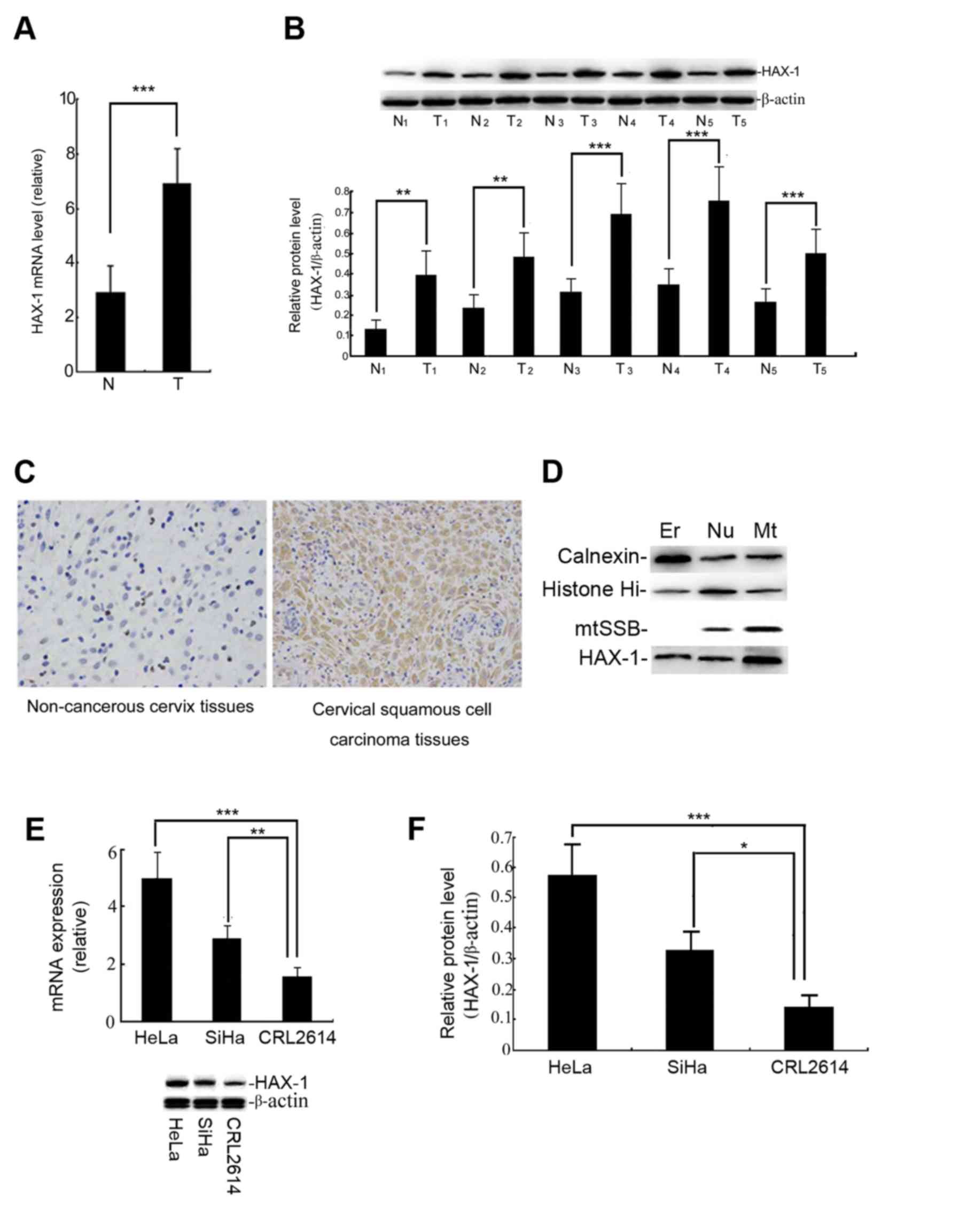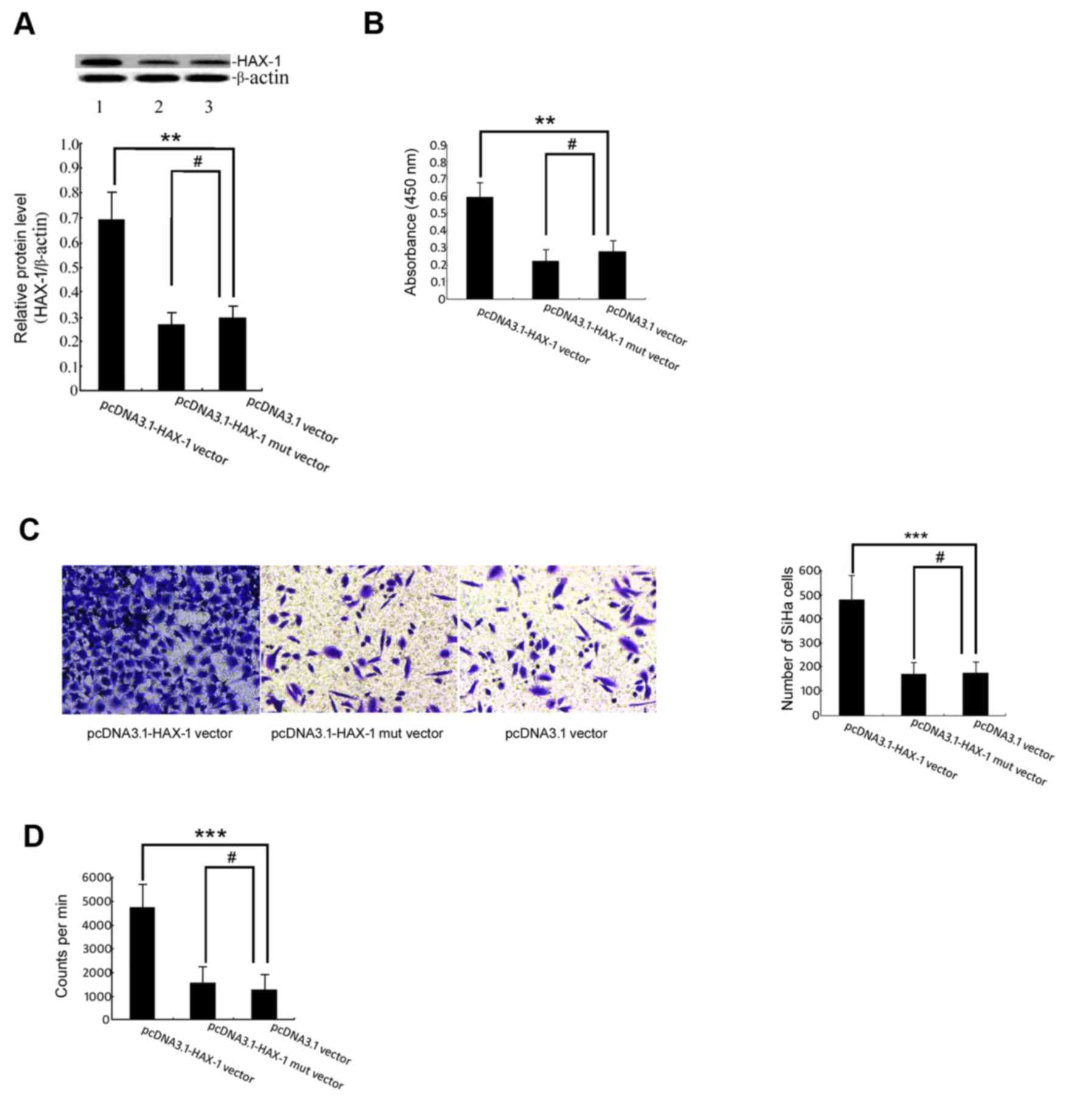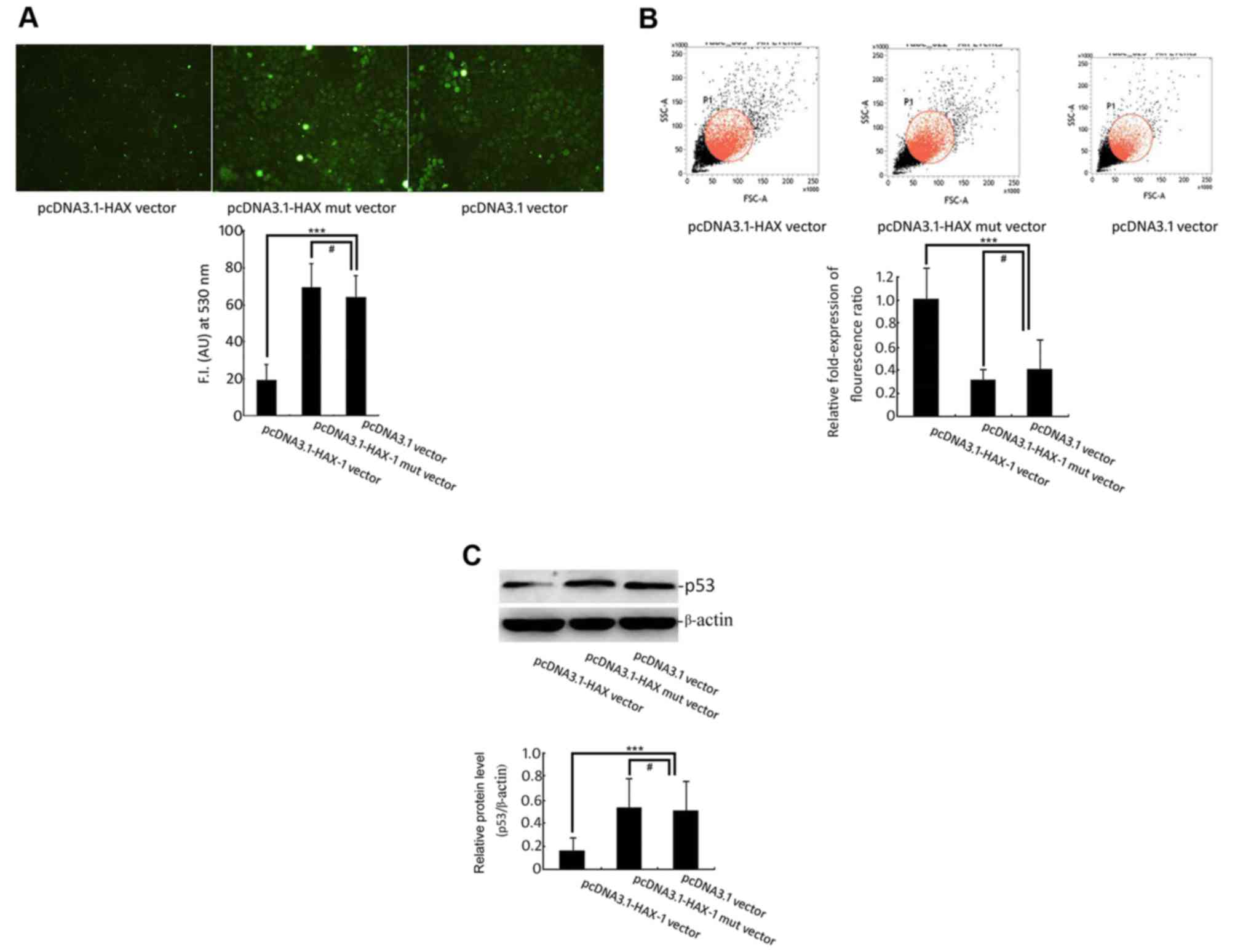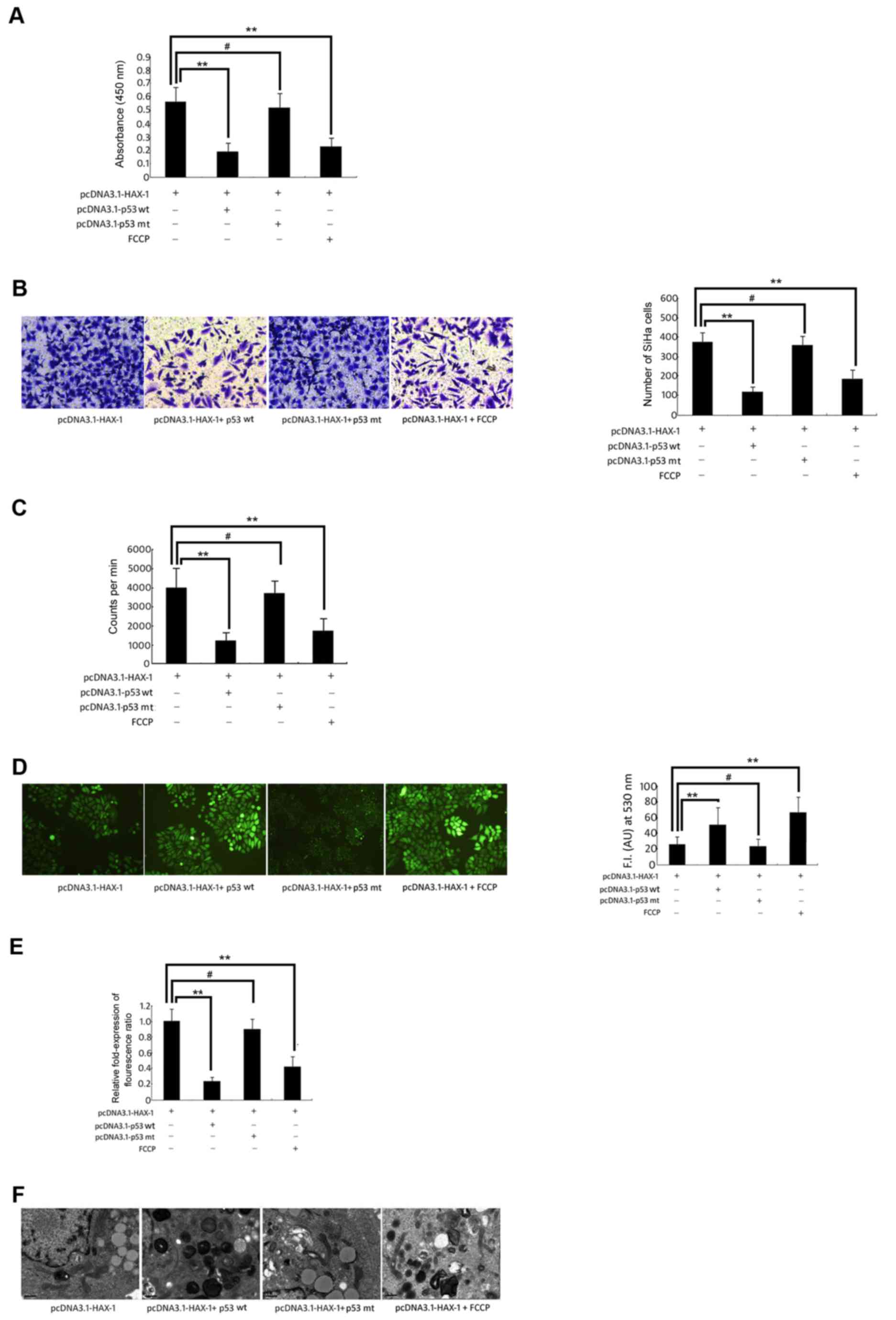|
1
|
Karageorgopoulou S, Kostakis ID, Gazouli
M, Markaki S, Papadimitriou M, Bournakis E, Dimopoulos MA and
Papadimitriou CA: Prognostic and predictive factors in patients
with metastatic or recurrent cervical cancer treated with
platinum-based chemotherapy. BMC Cancer. 17:4512017. View Article : Google Scholar : PubMed/NCBI
|
|
2
|
Sodhani P, Gupta S, Gupta R and Mehrotra
R: Bacterial vaginosis and cervical intraepithelial neoplasia: Is
there an association or is co-existence incidental? Asian Pac J
Cancer Prev. 18:1289–1292. 2017.PubMed/NCBI
|
|
3
|
Kwon MJ, Kang SY, Nam ES, Cho SJ and Rho
YS: HIPK2 overexpression and its prognostic role in human
papillomavirus-positive tonsillar squamous cell carcinoma. Biomed
Res Int. 2017:10564272017. View Article : Google Scholar : PubMed/NCBI
|
|
4
|
Borcoman E and Tourneau CL: Pembrolizumab
in cervical cancer: latest evidence and clinical usefulness. Ther
Adv Med Oncol. 9:431–439. 2017. View Article : Google Scholar : PubMed/NCBI
|
|
5
|
Karan D, Tawfik O and Dubey S: Expression
analysis of inflammasome sensors and implication of NLRP12
inflammasome in prostate cancer. Sci Rep. 7:43782017. View Article : Google Scholar : PubMed/NCBI
|
|
6
|
Rosania R, Varbanova M, Wex T, Langner C,
Bornschein J, Giorgio F, Ierardi E and Malfertheiner P: Regulation
of apoptosis is impaired in atrophic gastritis associated with
gastric cancer. BMC Gastroenterol. 17:842017. View Article : Google Scholar : PubMed/NCBI
|
|
7
|
Shen S, Li W, Ouyang MA and Wang J:
Structure-activity relationship of triterpenes and derived
glycosides against cancer cells and mechanism of apoptosis
induction. Nat Prod Res. 32:654–661. 2018. View Article : Google Scholar : PubMed/NCBI
|
|
8
|
Paech F, Bouitbir J and Krähenbühl S:
Hepatocellular toxicity associated with tyrosine kinase inhibitors:
Mitochondrial damage and inhibition of glycolysis. Front Pharmacol.
8:3672017. View Article : Google Scholar : PubMed/NCBI
|
|
9
|
Chen J, Wang YX, Dong MQ, Zhang B, Luo Y,
Niu W and Li ZC: Reoxygenation reverses hypoxic pulmonary arterial
remodeling by inducing smooth muscle cell apoptosis via reactive
oxygen species-mediated mitochondrial dysfunction. J Am Heart
Assoc. 6(pii): e0056022017. View Article : Google Scholar : PubMed/NCBI
|
|
10
|
Frumovitz M, Burzawa JK, Byers LA, Lyons
YA, Ramalingam P, Coleman RC and Brown J: Sequencing of mutational
hotspots in cancer-related genes in small cell neuroendocrine
cervical cancer. Gynecol Oncol. 141:588–591. 2016. View Article : Google Scholar : PubMed/NCBI
|
|
11
|
Yuan JY, Liu LY, Wang P, Li ZF, Ni L, Wang
A, Xiao SX, Song TS and Huang C: Small-interfering RNA-mediated
silencing of the MAPK p42 gene induces dual effects in HeLa cells.
Oncol Lett. 1:649–655. 2010. View Article : Google Scholar : PubMed/NCBI
|
|
12
|
Lee SA, Kim JW, Roh JW, Choi JY, Lee KM,
Yoo KY, Song YS and Kang D: Genetic polymorphisms of GSTM1, p21,
p53 and HPV infection with cervical cancer in Korean women. Gynecol
Oncol. 93:14–18. 2004. View Article : Google Scholar : PubMed/NCBI
|
|
13
|
You B, Cao X, Shao X, Ni H, Shi S, Shan Y,
Gu Z and You Y: Clinical and biological significance of HAX-1
overexpression in nasopharyngeal carcinoma. Oncotarget.
7:12505–12524. 2016. View Article : Google Scholar : PubMed/NCBI
|
|
14
|
Wang Y, Huo X, Cao Z, Xu H, Zhu J, Qian L,
Fu H and Xu B: HAX-1 is overexpressed in hepatocellular carcinoma
and promotes cell proliferation. Int J Clin Exp Pathol.
8:8099–8106. 2015.PubMed/NCBI
|
|
15
|
Livak KJ and Schmittgen TD: Analysis of
relative gene expression data using real-time quantitative PCR and
the 2(-Delta Delta C(T)) Method. Methods. 25:402–408. 2001.
View Article : Google Scholar : PubMed/NCBI
|
|
16
|
Li Q, Shen F and Wang C: TUC338 promotes
cell migration and invasion by targeting TIMP1 in cervical cancer.
Oncol Lett. 13:4526–4532. 2017. View Article : Google Scholar : PubMed/NCBI
|
|
17
|
Chen AH, Qin YE, Tang WF, Tao J, Song HM
and Zuo M: MiR-34a and miR-206 act as novel prognostic and therapy
biomarkers in cervical cancer. Cancer Cell Int. 17:632017.
View Article : Google Scholar : PubMed/NCBI
|
|
18
|
Nishi K, Luo H, Ishikura S, Doi K,
Iwaihara Y, Wills L, Baillie GS, Sakata T, Shirasawa S and Tsunoda
T: Apremilast induces apoptosis of human colorectal cancer cells
with mutant KRAS. Anticancer Res. 37:3833–3839. 2017.PubMed/NCBI
|
|
19
|
Suzuki Y, Demoliere C, Kitamura D,
Takeshita H, Deuschle U and Watanabe T: HAX-1, a novel
intracellular protein, localized on mitochondria, directly
associates with HS1, a substrate of Src family tyrosine kinases. J
Immunol. 158:2736–2744. 1997.PubMed/NCBI
|
|
20
|
Chao JR, Parganas E, Boyd K, Hong CY,
Opferman JT and Ihle JN: Hax1-mediated processing of HtrA2 by Parl
allows survival of lymphocytes and neurons. Nature. 452:98–102.
2008. View Article : Google Scholar : PubMed/NCBI
|
|
21
|
Fulda S and Debatin KM: Extrinsic versus
intrinsic apoptosis pathways in anticancer chemotherapy. Oncogene.
25:4798–4811. 2006. View Article : Google Scholar : PubMed/NCBI
|
|
22
|
Halestrap AP, Clarke SJ and Javadov SA:
Mitochondrial permeability transition pore opening during
myocardial reperfusion-a target for cardioprotection. Cardiovasc
Res. 61:372–385. 2004. View Article : Google Scholar : PubMed/NCBI
|
|
23
|
Zorov DB, Juhaszova M and Sollott SJ:
Mitochondrial reactive oxygen species (ROS) and ROS-induced ROS
release. Physiol Rev. 94:909–950. 2014. View Article : Google Scholar : PubMed/NCBI
|
|
24
|
Wu JY, Li M, Cao LJ, Sun ML, Chen D, Ren
HG, Xia Q, Tao ZT, Qin ZH, Hu QS and Wang GH: Protease Omi cleaving
Hax-1 protein contributes to OGD/R-induced mitochondrial damage in
neuroblastoma N2a cells and cerebral injury in MCAO mice. Acta
Pharmacol Sin. 36:1043–1052. 2015. View Article : Google Scholar : PubMed/NCBI
|
|
25
|
Li M, Tang Y, Zang W, Xuan X, Wang N, Ma
Y, Wang Y, Dong Z and Zhao G: Analysis of HAX-1 gene expression in
esophageal squamous cell carcinoma. Diagn Pathol. 8:472013.
View Article : Google Scholar : PubMed/NCBI
|
|
26
|
Trebinska A, Rembiszewska A, Ciosek K,
Ptaszynski K, Rowinski S, Kupryjanczyk J, Siedlecki JA and
Grzybowska EA: HAX-1overexpression, splicing and cellular
localization in tumors. BMC Cancer. 10:762010. View Article : Google Scholar : PubMed/NCBI
|
|
27
|
Sun X, Li Y, Zheng M, Zuo W and Zheng W:
MicroRNA-223 increases the sensitivity of triple-negative breast
cancer stem cells to TRAIL-induced apoptosis by targeting HAX-1.
PLoS One. 11:e01627542016. View Article : Google Scholar : PubMed/NCBI
|
|
28
|
Banerjee A, Saito K, Meyer K, Banerjee S,
Ait-Goughoulte M, Ray RB and Ray R: Hepatitis C virus core protein
and cellular protein HAX-1 promote 5-fluorouracil-mediated
hepatocyte growth inhibition. J Virol. 83:9663–9671. 2009.
View Article : Google Scholar : PubMed/NCBI
|
|
29
|
Sun SJ, Feng L, Zhao GQ and Dong ZM: HAX-1
promotes the chemoresistance, invasion, and tumorigenicity of
esophageal squamous carcinoma cells. Dig Dis Sci. 57:1838–1846.
2012. View Article : Google Scholar : PubMed/NCBI
|
|
30
|
Hirasaka K, Mills EM, Haruna M, Bando A,
Ikeda C, Abe T, Kohno S, Nowinski SM, Lago CU, Akagi K, et al: UCP3
is associated with Hax-1 in mitochondria in the presence of calcium
ion. Biochem Biophys Res Commun. 472:108–113. 2016. View Article : Google Scholar : PubMed/NCBI
|
|
31
|
Xia C, Shui L, Lou G, Ye B, Zhu W, Wang J,
Wu S, Xu X, Mao L, Xu W, et al: 0404 inhibits hepatocellular
carcinoma through a p53/miR-34a/SIRT1 positive feedback loop. Sci
Rep. 7:43962017. View Article : Google Scholar : PubMed/NCBI
|
|
32
|
Hoffman S, Martin D, Meléndez A and
Bargonetti J: C. elegans CEP-1/p53 and BEC-1 are involved in DNA
repair. PLoS One. 9:e888282014.
|
|
33
|
Ai G, Dachineni R, Kumar DR, Marimuthu S,
Alfonso LF and Bhat GJ: Aspirin acetylates wild type and mutant p53
in colon cancer cells: Identification of aspirin acetylated sites
on recombinant p53. Tumour Biol. 37:6007–6016. 2016. View Article : Google Scholar : PubMed/NCBI
|
|
34
|
Delbridge AR, Pang SH, Vandenberg CJ,
Grabow S, Aubrey BJ, Tai L, Herold MJ and Strasser A: RAG-induced
DNA lesions activate proapoptotic BIM to suppress lymphomagenesis
in p53-deficient mice. J Exp Med. 213:2039–2048. 2016. View Article : Google Scholar : PubMed/NCBI
|
|
35
|
Iwanicki MP, Chen HY, Iavarone C,
Zervantonakis IK, Muranen T, Novak M, Ince TA, Drapkin R and Brugge
JS: Mutant p53 regulates ovarian cancer transformed phenotypes
through autocrine matrix deposition. JCI Insight. 1:e868292016.
View Article : Google Scholar : PubMed/NCBI
|
|
36
|
Wang M, Zhang Y, Wang T, Zhang J, Zhou Z,
Sun Y, Wang S, Shi Y, Luan X, Zhang Y, et al: The USP7 inhibitor
P5091 induces cell death in ovarian cancers with different P53
status. Cell Physiol Biochem. 43:1755–1766. 2017. View Article : Google Scholar : PubMed/NCBI
|


















